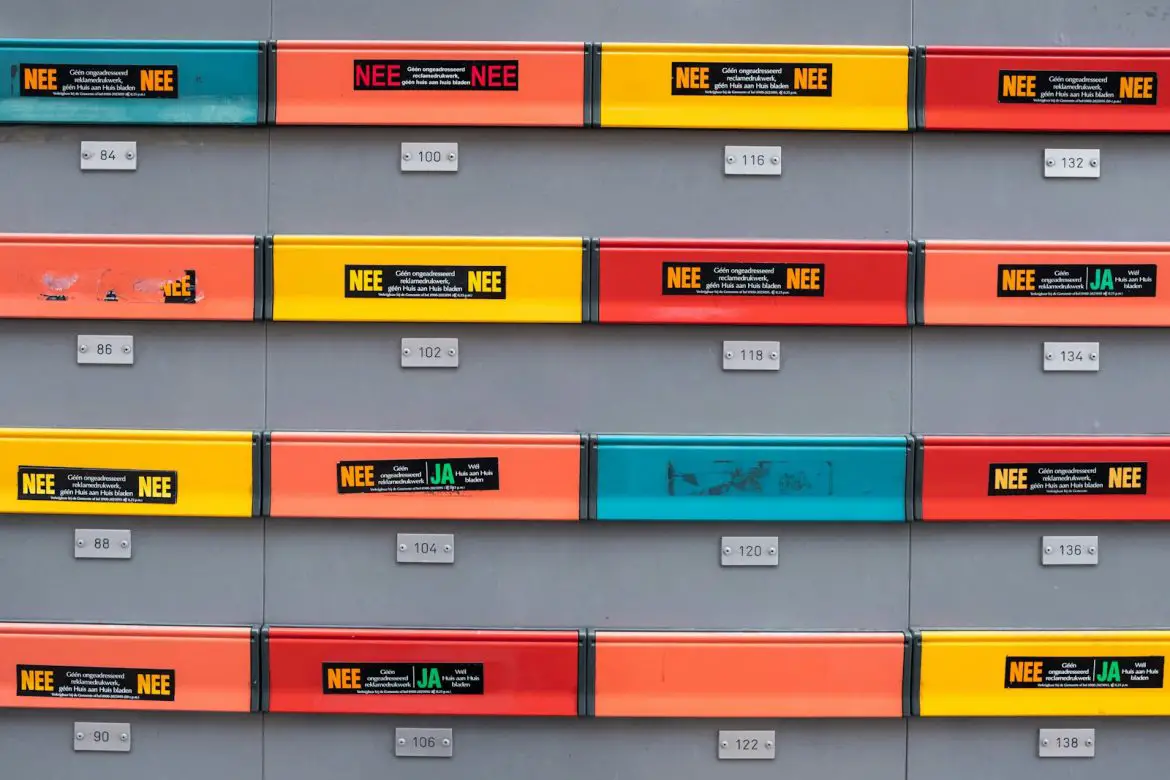In the world of education, classroom organization is the starting line for effective teaching and learning.
Ask any seasoned educator, and they’ll tell you that the seemingly small system of classroom mailboxes can make a huge difference in creating an efficient and nurturing learning environment.
As a pedagogue looking to optimize your classroom space, this comprehensive guide is designed to give you fresh perspectives and practical strategies on mailbox management.
The Crucial Role of Classroom Mailboxes
When we think of mailboxes, we often envision a row of postal slots, each with its recipient’s name awaiting a letter or package.
In the classroom, mailboxes serve a similar function— they provide students with a personal space, a sense of ownership, and an opportunity for organization.
Mailboxes are the bridge between teacher and student, where assignments, letters of encouragement, and graded work exchange hands.
Not only do classroom mailboxes facilitate effective communication, they also teach students responsibility.
From a young age, children can learn to keep track of their own materials, deadlines, and academic progress, all within the safe and familiar confines of their classroom.
10 Types of Classroom Mailboxes
Classroom mailboxes exist in various forms, each with its benefits and best use cases. Let’s explore five of the most popular types of classroom mailboxes and what sets them apart.
1. Cubby-Style Mailboxes
Cubby-style mailboxes are reminiscent of personal storage cubbies but in mail-slot form. They provide ample room for students to store notebooks, textbooks, and other materials.
2. Pocket Mail Sorters
These are ideal for classrooms where space is a premium. Pocket sorters are vertical systems with multiple pouches that help distribute and organize mail based on days of the week, subjects, or student names.
3. Wire Mesh and Slot Mailboxes
Usually wall-mounted, these mailboxes are durable and easily accessible. The open design allows students to quickly deposit and receive items without the need for opening and closing compartments.
4. Tabletop Letter Sorters
Perfect for keeping the classroom teacher-focused, these smaller sorts may sit on an educator’s table or a shelf, great for correspondence and easy retrieval.
5. DIY Mailboxes
Sometimes creativity is the best solution. DIY mail systems can be crafted from shoeboxes, file holders, or repurposed household items, providing a customizable and cost-effective alternative.
6. Modular Mailbox Units
Modular units offer the flexibility to change the size and shape of the mailbox system as class sizes and needs evolve. These units can be stacked or arranged side by side, with removable dividers for personalized space management.
7. Hanging File Mailboxes
An excellent choice for older students, hanging file mailboxes utilize hanging files within a compact, portable crate or box. This system is ideal for managing individual projects or portfolios over time.
8. Magnetic Mail Slots
For the modern classroom with ample whiteboard or metal surfaces, magnetic mail slots add a unique and easy-to-change configuration. Just snap-on magnetic pockets where you want them, and you’re ready to sort.
9. Clear View Mailboxes
These mailboxes are made from transparent material, allowing both students and teachers to see contents at a glance, ensuring that nothing important is overlooked or forgotten.
10. Carousel Mail Centers
Carousel mail centers take a spin on the traditional mailbox. They rotate smoothly, allowing for easy access from all angles. Perfect for circular or open learning spaces, they maximize accessibility for both teacher and students.
Best Ideas for Classroom Mailboxes
Now that you’re familiar with the types of mailboxes, here are some innovative ways to incorporate them into your educational setting.
Personalize for Pizzazz
Encourage students to take ownership of their mailbox by allowing them to decorate it with their name and unique flair. This simple act personalizes the space and makes it more than just a storage unit — it becomes a symbol of identity within the classroom.
Mail as a Learning Opportunity
Integrate the mailbox system into your curriculum. Math teachers, for example, can teach sorting, graphing, and even coding by devising mail-related activities. Language arts instructors might create a pen pal program within the class.
Embrace Digital Mailboxes
In today’s tech-savvy world, digital mail systems can streamline organization. Utilize software where students ‘receive’ and submit assignments virtually, with a physical mailbox serving as a symbolic, tangible interaction point.
https://www.pastpapersinside.com/teaching-in-dubai-pros-and-cons-of-teaching-in-dubai/
Seasonal and Thematic Swaps
Adapt the look and function of your mail system throughout the year. Switch out who-sits-where to promote diversity, or include seasonal decorations to keep things fresh and exciting.
Mailbox Mentorship
Leverage the mailbox system to build cross-grade relationships. Pair older students with younger ones and encourage them to exchange kind notes and helpful tips, modeling positive interaction and creating a mentoring framework.
Foster Classroom Economy
Create a classroom economy system utilizing mailboxes as bank accounts where students can earn and save ‘classroom currency’ for positive behavior, completed assignments, or helping others.
This financial simulation teaches valuable life skills and makes mailbox interaction a regular and exciting part of the school day.
Incorporate Mailbox Challenges
Introduce weekly or monthly challenges where students get creative with the content they leave in their peers’ mailboxes. This could include riddles, friendly quizzes, art pieces, or compliments, encouraging the class to connect and engage with each other in thoughtful ways.
Community Connection
Use the mailbox system as a means to connect with local community leaders or experts in various fields.
Students can write letters and send queries, to which guest correspondents reply by ‘mail,’ fostering a wider community relationship and showing practical uses of written communication.
Conclusion
A well-organized classroom is more than just aesthetically pleasing — it’s an ecosystem that fosters autonomy, responsibility, and community.
By thoughtfully selecting and utilizing mailbox systems, educators can set the stage for a more harmonious and effective teaching and learning experience.
Whether large or small, traditional or tech-savvy, your classroom mailbox can be a powerful tool in your pedagogical arsenal.



